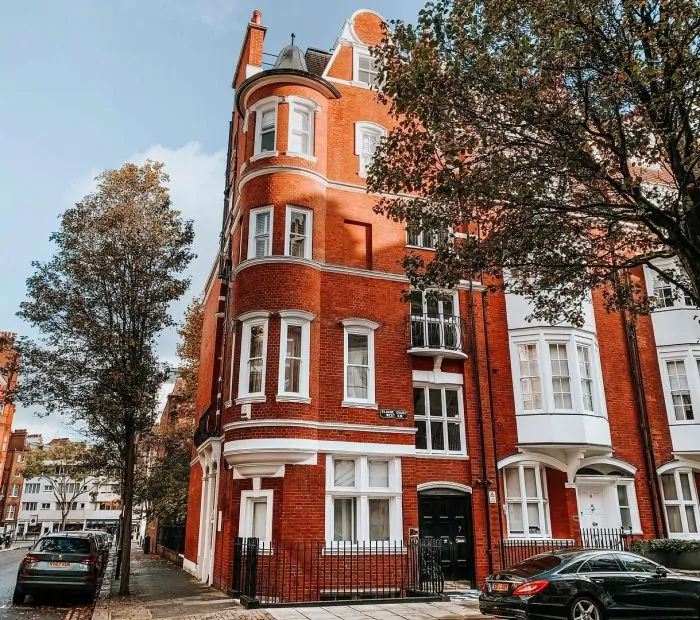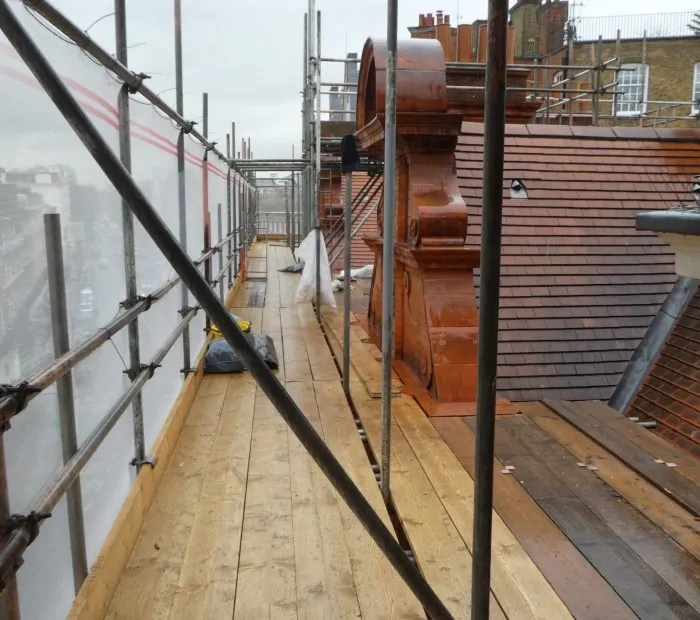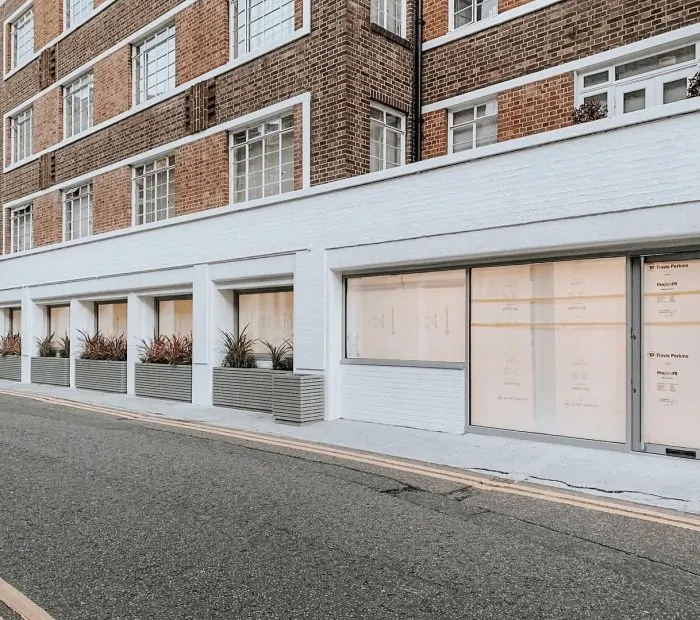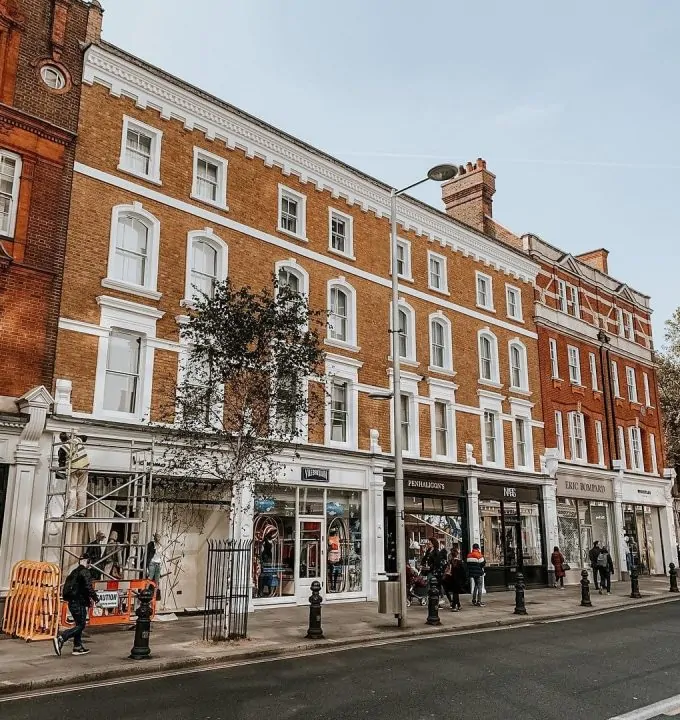
Highly Rated by Our Customers
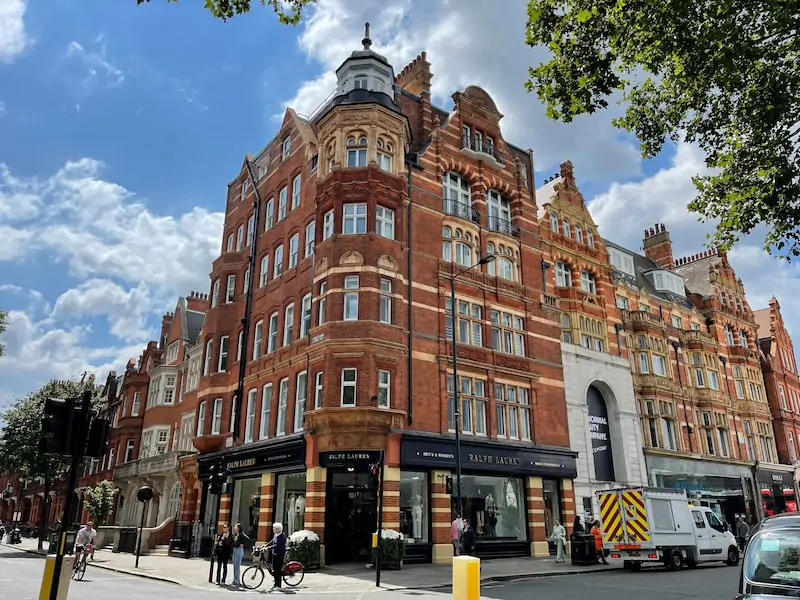
What is a Party Wall?
A party wall is a shared structure between properties, typically the wall separating semi-detached houses or the floors between flats. The Party Wall Act 1996 regulates how these shared structures are managed during construction or renovation work.
What is the Party Wall Act?
The Party Wall etc. Act 1996 is an essential legal safeguard in England and Wales, aimed at fostering cooperation when construction work is planned near shared or adjacent structures. Whether you’re thinking of digging foundations for a home extension, altering a shared wall between semi-detached properties, adding a loft conversion to your home, or even carrying out deep excavations for a basement, this Act could come into play.
It sets out a clear legal process for notifying adjoining property owners of certain types of work that might affect shared walls, boundaries or nearby foundations. These types of work broadly include:
- Changes to party walls or structures, such as those which separate terraced or semi-detached homes, which can then be divided into flats
- Excavations within 3m to existing neighbouring foundations
- New builds on the boundary line
The Act is designed to protect both parties by outlining rights and responsibilities, helping to manage risks like structural damage and access issues, while also allowing work to proceed in a fair and transparent manner.
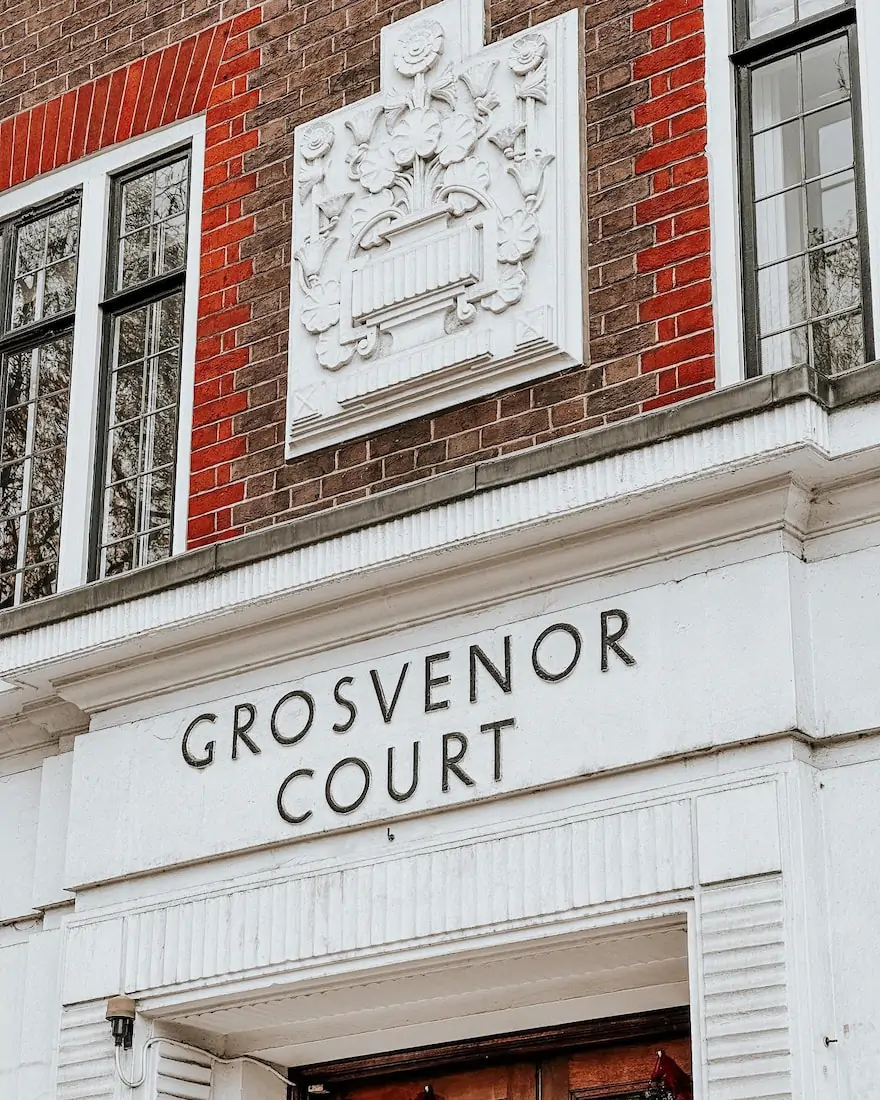
Types of Work Covered by the Party Wall Act
The most common new construction is a 1(5) wall, which is built right up to the boundary but not over it. Many Adjoining Owners mistakenly believe walls need to be set back but this isn’t the case. As long as nothing overhangs (e.g., roofs, gutters, fascias), the wall can go up to the boundary without needing your neighbour’s consent.
Less common is the 1(2) wall – this sits 50/50 on each property and does require the Adjoining Owner’s approval. It gives the Building Owner a slightly larger extension and provides the neighbour with a shared wall they can build from in the future, unlike a 1(5) wall.
There are 14 types of work that fall under this section. They tend to be viewed as more of a risk, since they involve some form of adjustment to the wall itself such as raising, cutting away from or changing the structure. This might include repairing or rebuilding a party wall, underpinning for basement excavations or to strengthen the wall for a loft extension, removing a party wall, or cutting into it for steep beams or waterproof lead flashings.
If excavations for foundations are within 3 metres of the neighbouring property, and deeper than the existing foundations, the Act will apply. Most London properties built during the Victorian period or the 1930s have shallow foundations that rarely exceed 30cm. However, to meet current building regulations, they need to be at least 1 metre deep.
What Does the Party Wall Process Involve?
- Serving Notice: The Building Owner must serve notice to the Adjoining Owner for any works under the Party Wall Act, usually via a surveyor, at least 2 months before work begins.
- Consent or Dissent: The Adjoining Owners has 14 days to respond, either to give consent to the work or dissent. If they dissent, or no response is given, a Party Wall Award will need to be prepared.
- Schedule of Condition: Before work begins, a photographic and written record of the Adjoining Owner’s property will need to be drawn up as evidence in case of any later damage.
- Party Wall Award: The surveyor provides a legally binding document which details the proposed work, the timeline and any necessary protections. This is issued to both parties, after which work can begin.
- Final Inspection: Once complete, the surveyor checks for any signs of damage and if none is found, the matter is closed. If there is damage, the Adjoining Owner can choose the Building Owner’s contractor for repairs or claim compensation to hire a contractor of their choosing.
Meet the Team

Scott Buchanan
Scott Buchanan is a Chartered Building Surveyor and RICS member with over 25 years of experience in the surveying and construction industry. Scott has a Degree in Building Surveying from the University of Greenwich and holds several professional memberships including the Faculty of Party Wall Surveyors, Chartered Management Institute and the Association for Project Safety.
During his professional career, Scott has been employed as a surveyor across sectors, including a leading global private practice, a London-based housing association, a large government agency, and a FTSE100 multinational services provider. This broad sector experience has given Scott excellent skills gained from working across contrasting environments and delivering projects of varying types.
Deciding to set up his own business in 2013 was a natural step for Scott whose commercial drive has seen Squarepoint Chartered Surveyors go from strength to strength. Developing the opportunity to work across a wide range of buildings – including houses, flats and offices, industrial buildings, shopping centres and historical buildings, and educational and sports facilities – Scott has used his considerable commercial and technical expertise, professional integrity and excellent communication skills to great success.

Adam Graham
Adam is a Chartered Building Surveyor and RICS member with 15 years experience of surveying and construction industry experience. Adam is experienced in all facets of Building Surveying commissions with a focus on party wall matters, building construction and pathology issues, condition surveys, dilapidations, planned preventative maintenance surveys and delivery of project-based works.
Adam is responsible for many of the party wall commissions that Squarepoint undertake and has a wide range of experience in dealing with all matters that fall under the Party Wall etc. Act 1996. Adam is a member of the Faculty of Party Wall Surveyors (MFPWS) and Pyramus and Thisbee Club, two leading authorities on the Party Wall etc. Act. Adam takes a proactive approach to all commissions and looks to simplify and guide all owners through the party wall process.

Brandon
Brandon commenced his full-time role at Squarepoint Chartered Surveyors in 2018, following his undergraduate degree in Building Surveying at the University of Westminster, where he achieved an Upper Second-Class Honours. Brandon is a Chartered Member of the Royal Institution of Chartered Surveyors and undertakes contract administrative duties for various external restoration projects and internal refurbishments.
He is also experienced in Party Wall matters with knowledge and understanding of the Party Wall etc. Act 1996.
Party Wall FAQs
A party wall is an adjoining wall that separates two different properties. Typically (although not always) the divide between the properties is at the centre of the wall. This means the owner of one of the properties containing the party wall must notify the other if they want to have any kind of work or changes carried out on the wall.
The Party Wall Act 1996 is enshrined in English law and places a legal requirement on building owners who are planning to alter their property in a way that may affect a wall or boundary shared between adjoining neighbours – the party wall. The requirements apply to residential and commercial property where extensions, or new developments, are proposed that have the potential to affect the shared boundary.
A party wall survey consists of the work carried out by a professional surveyor when they act either for a building owner or an adjoining owner. This work typically involves inspecting the wall to understand if the work being carried out is going to affect the party wall or the surrounding area, as well as providing professional advice and guidance.
If you want to have any work carried out on a party wall, you need to first provide your adjoining owner with a party wall notice. It is advisable to take the advice of a RICS Party Wall Surveyor to make this process as simple as possible. If you have been served with a party wall notice by a neighbour, you may need a Party Wall Surveyor to provide impartial opinion and guidance.
Your adjoining owner is anyone that has an interest greater than a year-to-year tenancy in the neighbouring property that will be affected by party wall work. This means that if the property is occupied by a long-term tenant or a leasehold owner, you will need to notify them as well as their landlord and/or freeholder.
You or your representative will need to disclose a detailed plan of your proposed works, including the project schedule and how it will affect the neighbouring property. It will need to clearly state that it is a notice under the provisions of the Act, and has to include your name and address (as well as the address of the building project, if this is different). This Notice can be delivered personally or by post, at least two months prior to your proposed start date.
If possible, you should discuss your construction plans with your neighbours informally before you need to give notice, so that any potential issues can be negotiated beforehand and they feel more comfortable providing consent.
After you or your surveyor has served Notice, your adjoining owner should respond with written consent within 14 days if they are happy with your plans. If they wish for any changes to be made to your plans then they will need to provide you with a counter-notice requesting these alterations. Where consent has not been given in the 14 days following Notice being served, it is considered as a party wall dispute.
When an adjoining owner is not satisfied with the proposed works, both parties are entitled to seek professional arbitration through a surveyor. This may be the same surveyor (known as an ‘agreed surveyor’), or separate ones for the building owner and adjoining owner. The surveyor(s) then impartially negotiate the terms between parties to draw up an “award”.
A party wall award states the work that will be carried out and the agreed terms of it being conducted. For example, the adjoining owner may stipulate that construction cannot be carried out during evenings or weekends, or that certain access can only be granted at particular times.
It should be noted that adjoining owners ultimately cannot prevent the work from happening by denying access to the contractors or surveyors. However, the building owner must provide appropriate notice (typically 14 days) to the occupier and adjoining owner, unless it’s an emergency.
The party wall award will also include a Schedule of Condition, documenting the current condition of the adjoining property so that any damage can be identified and made good once the construction has finished.
According to the Party Wall Act 1996, the Party Wall Award should resolve any dispute between neighbours. However, should either party object to its terms, they have 14 days from the date the award is finalised in which to appeal it at the County Court.
Be aware that if your appeal is overturned, you may be liable for the other building owner’s costs and costs resulting from delays to the building work.
In short, no. A formal Party Wall Notice must be served in order for Adjoining Owners to provide consent. If no Notice is served, no consent can be given and any works carried out will be outside of the law. In some cases, this situation arises in error – Building Owners did not realise their work would be covered, or the scope of the project has had to change after work has started.
If an Adjoining Owner was not given the opportunity to dissent to works they may apply for an injunction to stop further activity. They may also claim against the Building Owner for any damages that may have occurred as a result of the works and without a Party Wall Award and Schedule of Condition, it will be difficult for Building Owners to dispute their liability.
Get a Free Party Wall Quote
"*" indicates required fields
About Us
Our surveying services cover Central London, South London, North London and Uxbridge. Our team of experienced professionals have expert knowledge with the unique character and property landscape of areas.
42 – 44 Bishopsgate
London
EC2N 4AH
5th Floor, The Grange
London
N14 6BN
Belmont Road
Uxbridge
UB8 1HE
Why Choose Squarepoint Surveyors?
Squarepoint Surveyors are a team of experienced RICS Chartered Surveyors and party wall surveyors operating in London and the surrounding regions. We are members of the Faculty of Party Wall Surveyors (FPWS) and the Pyramus and Thisbe Society.
We provide the advice and guidance you need on any party wall-related matter, whether you are a Building Owner looking to carry out work, or an Adjoining Owner who has been served with a party wall notice. Our experienced surveyors ensure that they are up to date with the latest case law and industry best practices. With many years’ experience in the London property market, we have the necessary expertise to help you manage this often complex party wall process from start to finish, guiding you safely throughout. We also provide a no obligation and free review service for architects, engineers or developers who require advice in the early stage of any project or development scheme.



We work with both residential and commercial clients across a wide range of London boroughs. Each of these areas features distinct property types, and the application of the Party Wall Act can vary accordingly. For example:
Hackney & Harringey
Predominantly Victorian and Edwardian terraced housing, where shared walls are common. Loft conversions, rear extensions and basement digs often trigger Party Wall Act notices due to proximity to neighbouring properties.
Highgate
A mix of period homes and larger detached properties are found here. While some developments might not directly impact shared structures, excavation near boundaries or works affecting garden walls can still require notice.
Notting Hill, Chelsea & Knightsbridge
Renowned for its high-value properties and listed buildings, works like basement extensions, structural alterations, or internal layout changes in converted townhouses frequently invoke the Party Wall Act.
Uxbridge & Enfield
These outer boroughs feature a mix of post-war semi-detached properties, new builds and commercial units. Common party wall scenarios include side extensions and redevelopment of mixed-use sites.
Need Party Wall Advice?
We would be more than happy to assist you. Contact a friendly expert today.
Download Our Party Wall Guide
The Squarepoint Party Wall Guide is essential reading for anyone who owns or lives in a property that shares a party wall with another property. Topics include:
- What is a Party Wall?
- What is the Party Wall Act?
- What is a Party Wall Notice?
- What is a Party Wall Dispute?
- What is a Party Wall Award?
- When Do You Need a Party Wall Surveyor?
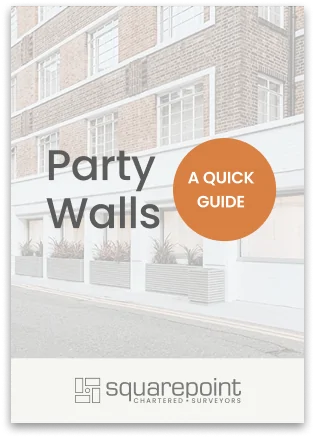
Explore More
Find Out More About Party Wall Surveying Procedures.
Get in Touch for a Free Quote
Get a free quote and discuss your property requirements with a RICS accredited Surveyor. Call us on 0207 651 0000, email us on hello@squarepointsurveyors.co.uk or fill in the form below and we will get back to you shortly.
"*" indicates required fields
